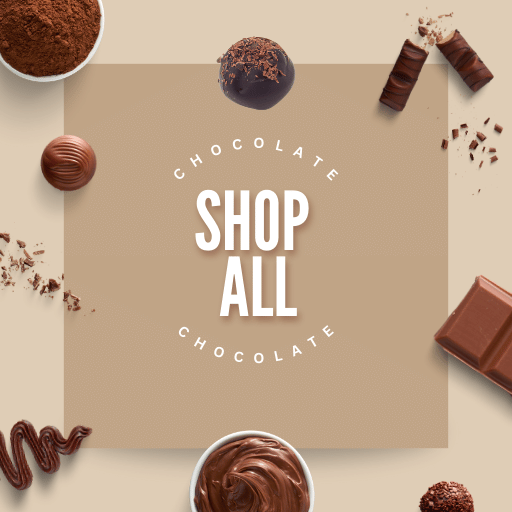If you’re anything like me, you will love chocolate.
I eat, sleep and breathe chocolate, and so does the rest of the Whitaker family!
To us, chocolate is our life, and we love seeing all our customers enjoying it too.
Nothing makes us more proud and happy than the fact that, after 135 years, the Whitaker Chocolates brand remains strong and has a very loyal following.
May the LOVE of chocolate and Whitakers continue!
But do you know how chocolate is made?
In this post, I will tell you everything you need to know about how cocoa beans are turned into liquid chocolate and then into retail products.
How Chocolate is Made - The Short Version
Cacao tree seeds are harvested and fermented to enhance their flavour.
Following fermentation, the beans are dried, cleaned, and roasted.
The cacao bean's shell is removed, resulting in cacao nibs. These nibs are subsequently ground to create cacao mass.
In this grinding process, cocoa butter is released from the nibs, creating a smooth chocolate liquor.
Chocolatiers incorporate additional ingredients like sugar, milk powder, or vanilla to enhance the flavour and texture of their chocolate creations.
Additional cocoa butter may occasionally be included to provide an enhanced creamy texture to the chocolate.

(Check this post out if you are interested in the question: how many squares of dark chocolate per day?).
How Chocolate is Made Step-by-Step and in Detail
Making chocolate from bean to bar is a very long and slow process, and several steps must be followed to make the delicious chocolate that we all enjoy today.
For ease, I have broken down each step and expanded on what is involved at each stage.
- Growing the Cacao
- Harvesting of the Cacao
- Fermentation of the Cacao
- Drying the Cacao
- Roasting the beans
- Winnowing the beans
- Grinding (making the chocolate liquor)
- Tempering the Chocolate
- Turning Chocolate Into Hundreds of Different Products!
1. Growing the Cacao
Chocolate is produced using cacao beans obtained from the Theobroma cacao tree.
Cacao farmers cultivate this tree in tropical climates worldwide. The tree is unique because it can produce flowers and fruit simultaneously throughout the year.
The cacao pod, the tree's fruit, is the primary ingredient for making chocolate.
A cacao tree typically takes around five years to mature and produce fruit, yielding an average of 30 to 40 pods annually.
Determining the optimal time to harvest ripe cacao pods requires expertise and knowledge.
(Take a look at this post if you are interested in reading about: What is cacao?)
2. Harvesting of the Cacao
Harvesting is usually done by hand, as great care is needed to ensure the tree’s bark is not damaged.
If damaged, it can limit the number of flowers the tree produces in the future.
Once the pods are harvested, they are cut open to remove the beans and the sticky white pulp.
Each pod contains around 30 to 50 cacao beans.
3. Fermentation of the Cacao
Once opened, the beans and pulp are placed into large wooden fermentation bins or boxes, which are usually topped with banana leaves to help increase the temperature inside.
As soon as the beans are exposed to the air, they ferment.
This is a critical stage, as this process breaks down the beans' coating and kills harmful germs and bacteria.
Fermentation takes 5 - 8 days. Each day, the beans are turned over and stirred to ensure they have an equal amount of oxygen.
Over this time, the flavour of the beans will also develop and get deeper.
4. Drying the Cacao
After fermentation, the beans contain a high moisture level, which must be removed.
If any moisture remains in the beans, the fermentation process will continue, affecting their flavour.
Due to the tropical and warm sunny weather where cocoa is grown, drying the beans in the sun is the best method.
Farmers lay out their beans in direct sunlight and turn them regularly to ensure they are drying out equally.
The drying process takes several days.
In milder/wetter climates, beans are dried on open fires, which can give the beans a distinct smoky flavour.
Once the beans are dried, they are placed into large hessian sacks ready for exporting.
5. Roasting the beans
When the sacks of cacao beans arrive at the chocolate factory, the first stage is to sort the beans and remove any debris or beans that may become mouldy during transit.
Once the beans are ready, they are roasted in ovens.
The roasting temperature for cacao beans varies depending on factors like bean type and average size.
Roasting cacao beans is a vital step in cultivating their distinct flavour profile.
This process also eliminates potential bacteria, such as Salmonella, while making it easier to remove the bean's outer shell.
6. Winnowing the beans
After the beans have been roasted, their outer shells must be removed, leaving only the cocoa nibs.
Cocoa nibs are a crucial ingredient in making chocolate.
A special winnowing machine removes the outer shells by using bursts of air to separate the shells from the cocoa nibs.
Did you know? Cacao shells are full of protein, fibre, minerals, and bioactive compounds and are an excellent addition for animal feed, making cacao tea or even making excellent garden fertiliser!
7. Grinding (making the chocolate liquor)
Cacao nibs are processed using a mélangeur grinder, a machine featuring two rotating stone slabs that grind the nibs, similar to a large pestle and mortar.
Nibs consist of cocoa solids and cocoa butter. Initially, the nibs are transformed into a thick paste, referred to as cocoa paste or cocoa liquor.
As the grinding progresses, the cocoa butter within the nibs starts to melt.
The more the chocolate is ground, the smoother the resulting liquor.
Some chocolatiers grind their chocolate for days to achieve an exceptionally smooth texture.
During the grinding process, additional ingredients like sugar, milk powder, or vanilla are incorporated.
Extra cocoa butter may be included to enhance the chocolate's creamy mouthfeel.
When the chocolatier is satisfied with the chocolate's consistency, it is poured into large containers to cool and solidify.
(You might also enjoy reading this short blog post looking at the question - where does chocolate originate from?)
8. Tempering the Chocolate
Before the chocolate is turned into chocolate bars, it must first be tempered.
Tempering chocolate is the process of raising and lowering the temperature of the chocolate to alter the crystals within it.
Untempered chocolate appears dull and crumbly, while tempered chocolate is shiny, firm, and exhibits the characteristic snap.
Although tempering was once performed manually, most large-scale chocolatiers currently use tempering machines for this process.
9. Turning Chocolate Into Hundreds of Different Products
Once the chocolate is tempered, it can be poured into moulds to make your favourite chocolate.
The moulds are shaken or tapped against a hard surface to remove air bubbles.
They are then set aside to cool down or placed in cooling tunnels to speed up the setting.
As the chocolate cools down, it also begins to solidify.
One final quality check of the chocolate is done before they are wrapped in foil or paper packaging to keep them fresh.
The chocolate is now ready to be delivered to you to enjoy.
Here are a few of my favourite Whitakers chocolates:
- Chilli and orange chocolate bar (Fairtrade and vegan!)
- Salted Caramel fondant creams (Fairtrade and vegan)
- Mini salted caramel truffles
- Dark Ginger wafer thins (Fairtrade and vegan)
(Take a look at this post if you want to know: Is dark chocolate ok for a vegan to eat?)
What’s the Difference in How Dark and Milk Chocolate is Made?
Both milk and dark chocolate are made using the same process, the only difference being the added ingredients.
At the grinding stage, more milk powder is added to make milk chocolate and to increase the creaminess.

How is White Chocolate Made
Strictly speaking, white chocolate isn’t really chocolate as it doesn’t contain any cocoa solids.
Making white chocolate means bypassing almost all of the steps from above.
It is made with cocoa butter blended with some combination of sugar, milk, cream and vanilla flavouring.
Final Notes On How Chocolate is Made Step-by-Step
Making chocolate from bean to bar shouldn’t be overestimated.
It’s a long, laborious process that takes time and lots of expertise.
Why not leave this part to the experts (like Whitakers!) and just sit back and enjoy every mouthful?
That is the end of this post, looking at the question of how chocolate is made step-by-step.
Thanks for visiting our blog, and before you go, check out these useful links:
More Chocolatey Goodness:
- Like chocolate so much that you want to buy it in bulk? Click here for our bulk-buy chocolate bars.
- Click here to find out about our private-label chocolate products.
- You might also be interested in this post asking: what is chocolate?












2 comments
I LOVE CHOCOLATE!!!!!! 🍫❤️
Cocoa is listed as high in fiber but chocolates don’t seem to be high in fiber, even chocolates that list high cocoa content for example 70 percent cocoa. What am I missing?